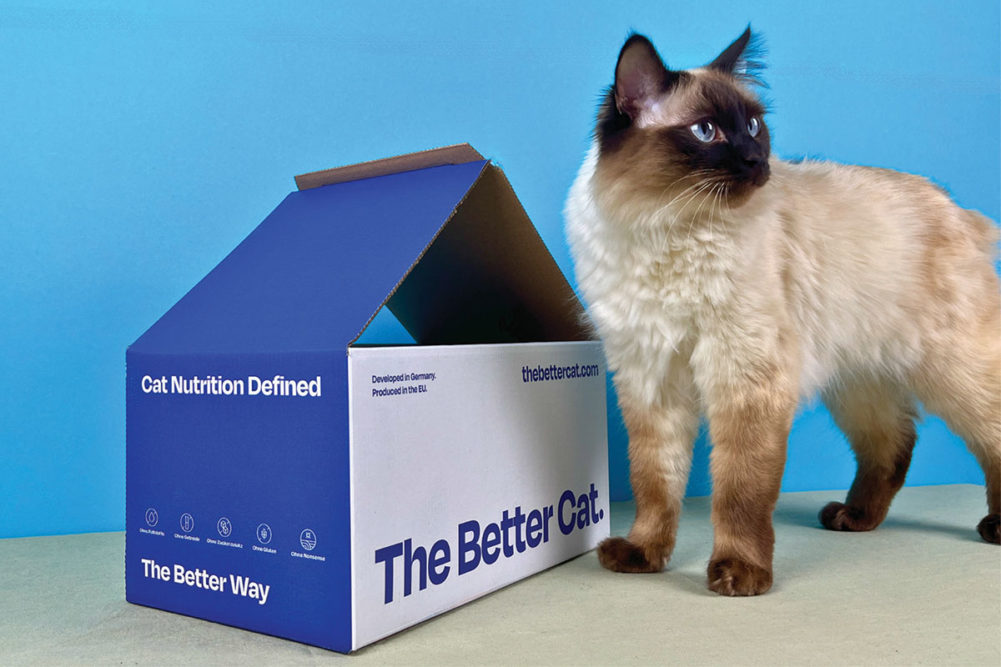This article was published in the January 2024 issue of Pet Food Processing. Read it and other articles from this issue in our January digital edition.
When shopping for pet food, treats and supplements, consumers have a wealth of options to choose from. However limitless the offerings may seem, the reality is that nutritional offerings for dogs far exceed those for cats. For example, in 2022, Pet Food Processing covered 94 new product announcements for dogs and just 21 new products for cats. This stark disparity is beginning to catch the eye of the industry and consumers.
For example, upon noticing a lack of cat-focused products, from veterinary medicine to nutrition, cat-parent Rachit Shadra co-founded Berlin-based The Better Cat, a company dedicated to cat-centric healthcare and nutrition.
“We found that many cat parents are tired of not being able to get nutrition and care products tailored for their best friends,” said Rachit Shadra, The Better Cat.
“We found that many cat parents are tired of not being able to get nutrition and care products tailored for their best friends,” he shared. “This was an extremely unsatisfying status quo for us, knowing that the cat food market is the larger and also faster growing market for the biggest economies in the European Union.
“After an intense research process, we found out that the pickiness of cats can be traced back to the lack of innovation around food,” Shadra added. “Very few companies were able to come up with a product strategy that would be centered around the feline — it’s not that it wasn’t possible, it’s just that it’s sharply different to what that would be for dogs. And since the largest markets are the United States and the United Kingdom, dogs take up a significantly larger portion of market share. The product innovation revolves mostly around their needs and then matching parts of it are adopted to cats.”
Global demand
Though the offerings for cats are significantly smaller than those for canines, the need for more cat-centric nutritional products is steadily rising as cat ownership levels flourish throughout the globe. According to the Brussels-based European Pet Food Industry Federation’s (FEDIAF) Facts & Figures 2022 report, cats rule the roost throughout the region with a population of 127.2 million. Additionally, FEDIAF estimates that 26% of European households own at least one cat.
According to Shadra, this is due to trends in housing and is mostly seen amongst younger generations, especially in Germany.
“Many people, especially Millennials and Gen Zs, leave behind larger residential properties in rural areas in order to move to densely populated areas,” he added. “In the big cities, it is common practice to live in very small apartments, which only allow for small pets. This trend is reflected in the 50% of all German cats living indoors, one of the highest percentages of indoor cats worldwide.”
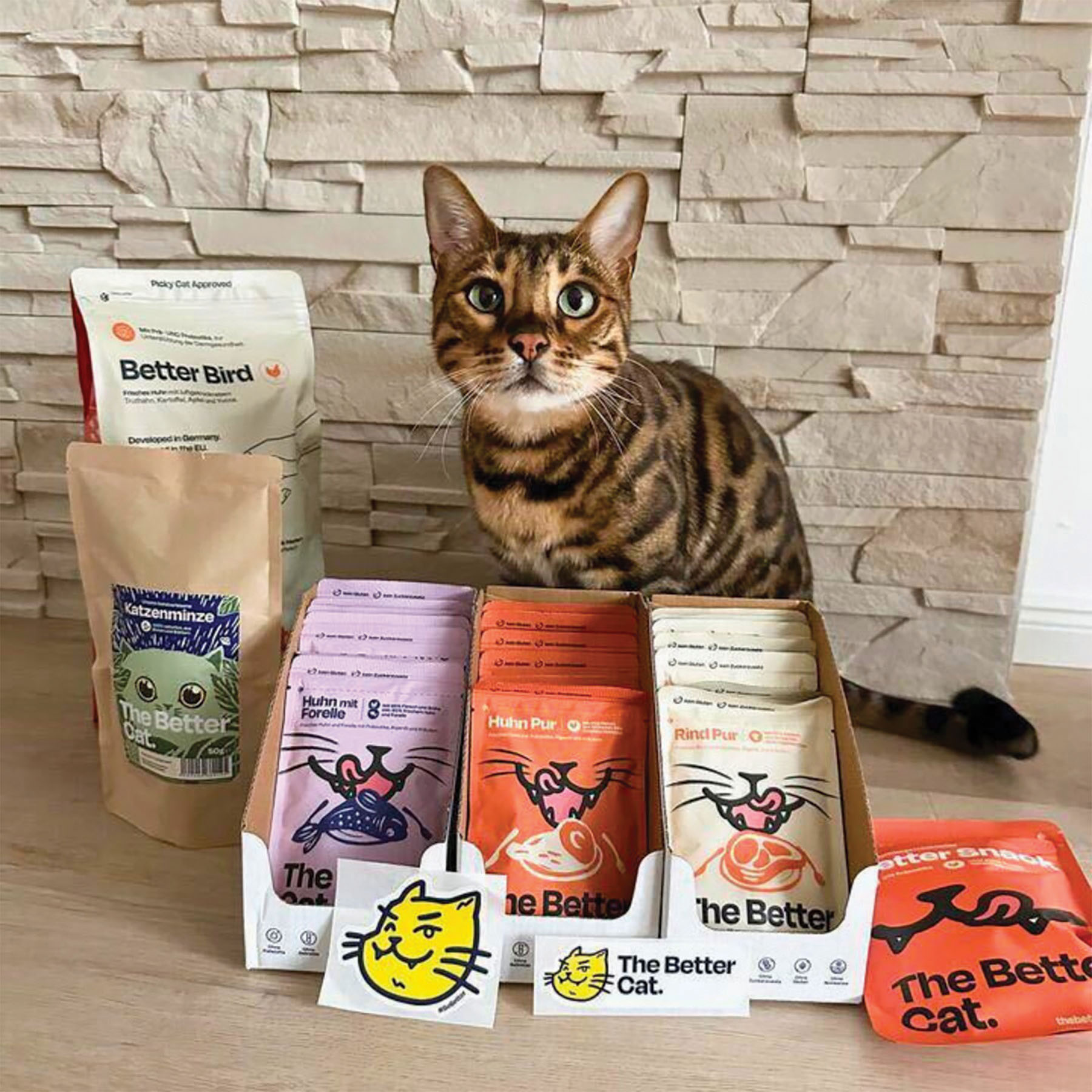
The Better Cat originally launched with a line of dry cat foods but has since expanded its cat-centric offerings to include wet formats, treats and even supplies.
|In Spain, dogs remain on top population wise, but cat food sales experienced far more growth in 2022 compared to dog food. According to Spain’s National Association of Pet Food Manufacturers (ANFAAC), Madrid, dry cat food sales rose 16.6%, wet cat food rose 17.6%, and cat snacks skyrocketed 25.7%, whereas sales of dog food products experienced much smaller increases at 12.8% for dry, 13.8% for wet, and 9.5% for snacks.
Looking across the pond to the United States, attritions in pet ownership may begin to turn the tide from dog-country to cat. According to research from Rockville, Md.-based Packaged Facts, dog-owning households decreased from 42% in 2018 to 38% in 2022 due to attritions in pet ownership, whereas cat-owning households increased 1% during the same period.
Despite strong cat ownership levels, the dog-cat product disparity is well known to cat parents. According to Packaged Facts’ September/October 2023 survey, 44% of cat owners feel that cats are treated as second-class citizens by pet food and treat companies, an increase of 6% compared to January 2022.
Current offerings
With a clear growth market established, many cat-centric companies have entered the market, paying a high-level of attention to feline nutritional needs that dogs have received for decades.
“Over the past several years, marketers of cat food and treats have been focusing on offering more premium products, similar to what has been available in the dog category for over a decade,” said Shannon Brown, Packaged Facts Pet.
“Over the past several years, marketers of cat food and treats have been focusing on offering more premium products, similar to what has been available in the dog category for over a decade,” said Shannon Brown, brand manager of Packaged Facts Pet. “We’ve seen new product development in cat food and treats focus on functional products, higher-quality proteins and ingredients, more diverse formulations, including kitten and senior products, and more cat-specific offerings in areas such as supplements. We expect these trends to continue as cat owner demand continues to drive these developments.”
Among these companies includes The Better Cat, which launched in 2022 with a focus on nutrition designed with cats at the forefront. The company originally launched with a range of dry cat foods but has since expanded to include wet diets, freeze-dried treats, and even some cat supplies. The company’s food and treat formulas are high in protein and contain superfoods, prebiotics and other functional ingredients.
In creating all its products, The Better Cat hones its focus on preventive health, which often begins with functional ingredients.
“Every single recipe that we bring out into the market for cats has natural ingredients and supplements directly infused into the food specifically targeted at helping cats stay healthy and avoid getting digestive, immune, mobility or relaxation-related health issues,” Shadra said. “This is precisely what makes us incredibly different from everyone else in the market — we don’t just look at protein, carbs, fats.”
The company is currently planning a line of functional cat treats targeting mobility, immune health, and skin and coat health in felines to further expand its offerings, as well as its goal to provide cats with more preventive care.
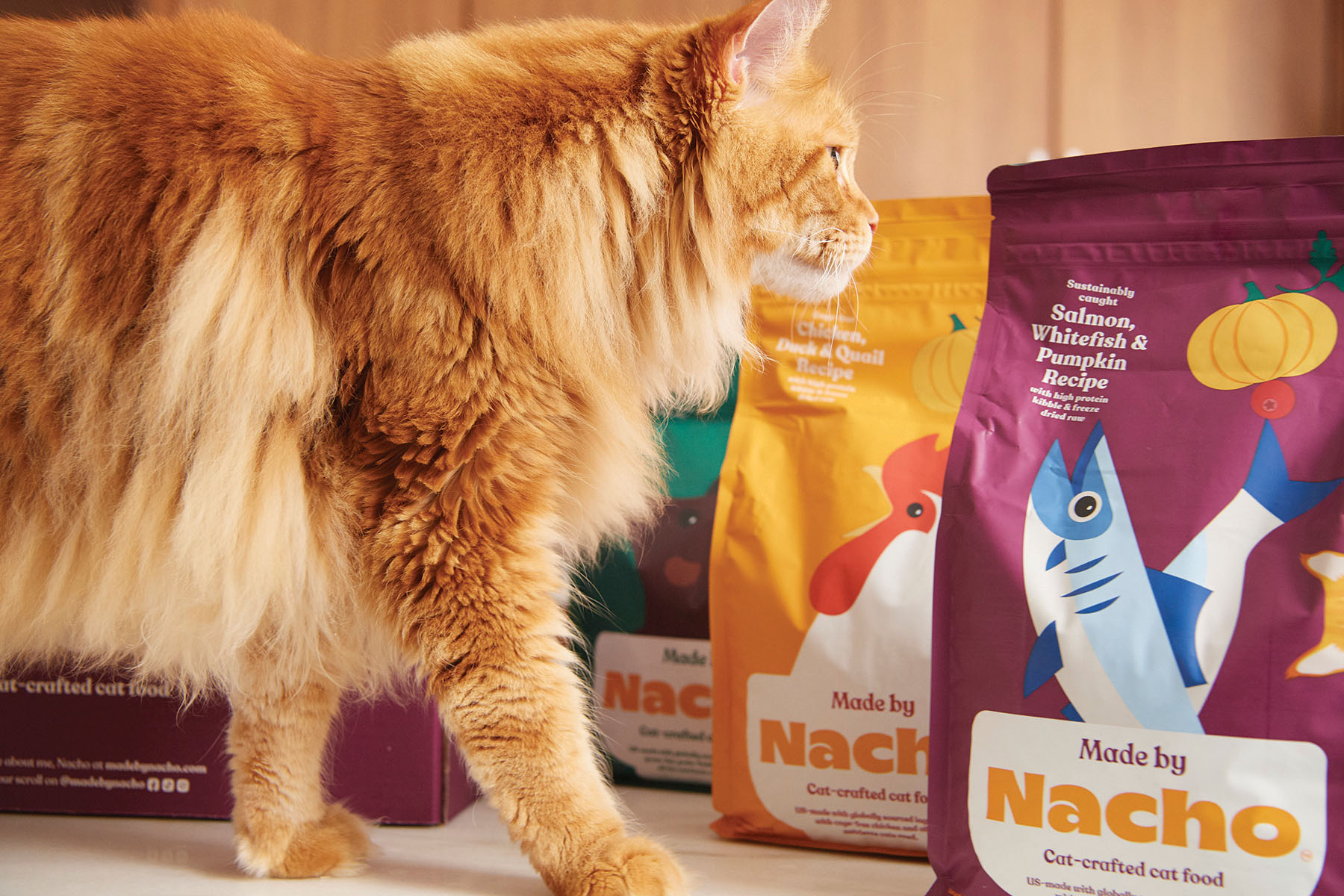
Made by Nacho takes a more culinary approach to cat-centric nutrition inspired by co-founder Celebrity Chef Bobby Flay.
|“Along with our veterinarian and nutritionist, we identified the four core health areas which cats struggle with at most points in their life: digestion (stomach and kidneys), immunity, mobility and relaxation/anxiety,” Shadra said. “When we looked at most of our incumbents, they all took a prescription or medical food approach for these specific areas. We decided to turn this on its head. We decided that we don’t want to go into cure/regulation — we’d rather go into prevention.”
Other cat-centric companies seeking to meet gaps in the cat nutrition market include Made by Nacho, New York; Smalls, New York; Ten Lives, San Francisco; and KatKin, Clerkenwell, England.
Sensitive senses
The issue many run into when creating products for cats is their different eating behaviors, with many citing cats as “finicky.” According to Nancy Rawson, Ph.D., acting director and president of Monell Chemical Senses Center, Philadelphia, this behavior can be attributed to cats’ sensory systems, which are starkly different compared to dogs’ systems. This makes creating foods and treats for cats a bit more difficult — but not impossible.
“With cats, [food] has to pass the nose test, the tongue test, and they are also more sensitive to textures and shapes,” said Nancy Rawson, Monell Chemical Sensory Systems.
“With a dog, if [food] passes the ‘nose’ test, it’s going down,” Rawson shared. “With cats, it has to pass the nose test, the tongue test, and they are also more sensitive to textures and shapes. Cats also don’t show their positive reactions in quite the same way a dog does.
“Cats have been domesticated for a much shorter period of time and are still learning, so we may be inferring disinterest or dislike when they like the food just fine, but just don’t feel like eating when you want them to or aren’t communicating their interest in a way that we expect or would like,” she added.
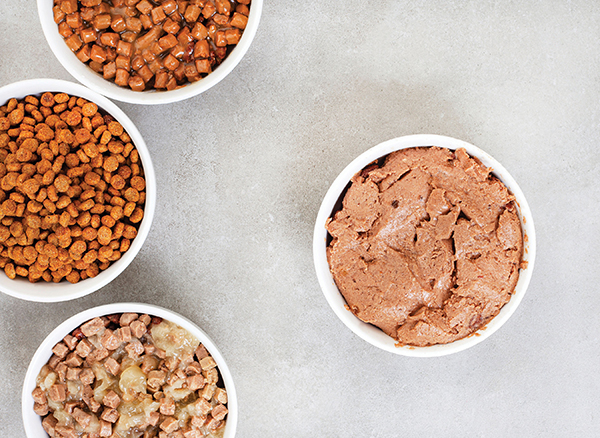
To account for cats’ varying shape and texture preferences, many cat-centric companies offer a variety of food formats.
| Source: ©ANINKA – STOCK.ADOBE.COMAs explained by Rawson, cats’ taste receptors are much different compared to those in dogs. For one thing, a cat’s sugar taste receptor has mutated to be nonfunctional, meaning felines cannot taste sweet flavors. Secondly, their umami taste receptor responds more strongly to amino acids like aspartate. Also, cats’ bitter taste receptors are much smaller than those in dogs and humans.
Not only do cat’s taste receptors differ — so does their eating style. Unlike dogs, cats do not chew their food, preferring instead to swallow it whole. This makes selecting the right texture and shape imperative when formulating, as a cat relies on a lengthier decision process to fully understand their food before they’re willing take it down.
“Generally, cats are more discriminating than dogs,” said Dan Su, DVM, board-certified veterinary nutritionist and manager of nutrition services for BSM Partners, Bentonville, Ark. “Cats are also more sensitive to texture, so formulators have to take that into consideration as well. An example of this is the numerous textures available in wet foods with products such as pate, chunks and gravy, minced, etc. to satisfy differing cat preferences. In fresh formulations, dogs will eat most ingredients that are used in the formulation, but cats may not eat even an all-meat diet if the smell, flavor or texture is not to their liking.”
Cat-specific challenges
Aside from their differing sensory perceptions, many other challenges arise when creating cat-specific nutrition, from the right ingredients to supply chain and sustainability issues.
Regarding ingredients, it’s imperative that both suppliers and manufacturers understand the differences for cats. Since felines and canines are not the same species, adjusting a dog food formula to suit cats may not be the best approach as many ingredients have differing toxicity levels and health impacts. For instance, different phosphate sources impact felines differently than canines.
“Not all phosphate sources are created equal,” Su explained. “Research shows that inorganic phosphates from supplemental phosphorus sources/acidifiers like phosphoric acid, but not organic sources from meat and bone, can contribute to long term kidney damage in cats. Because of this, the industry is going to have to shift formulation strategy and infrastructure to accommodate for using other ingredients that don’t contribute more inorganic phosphorus to feline diets.”
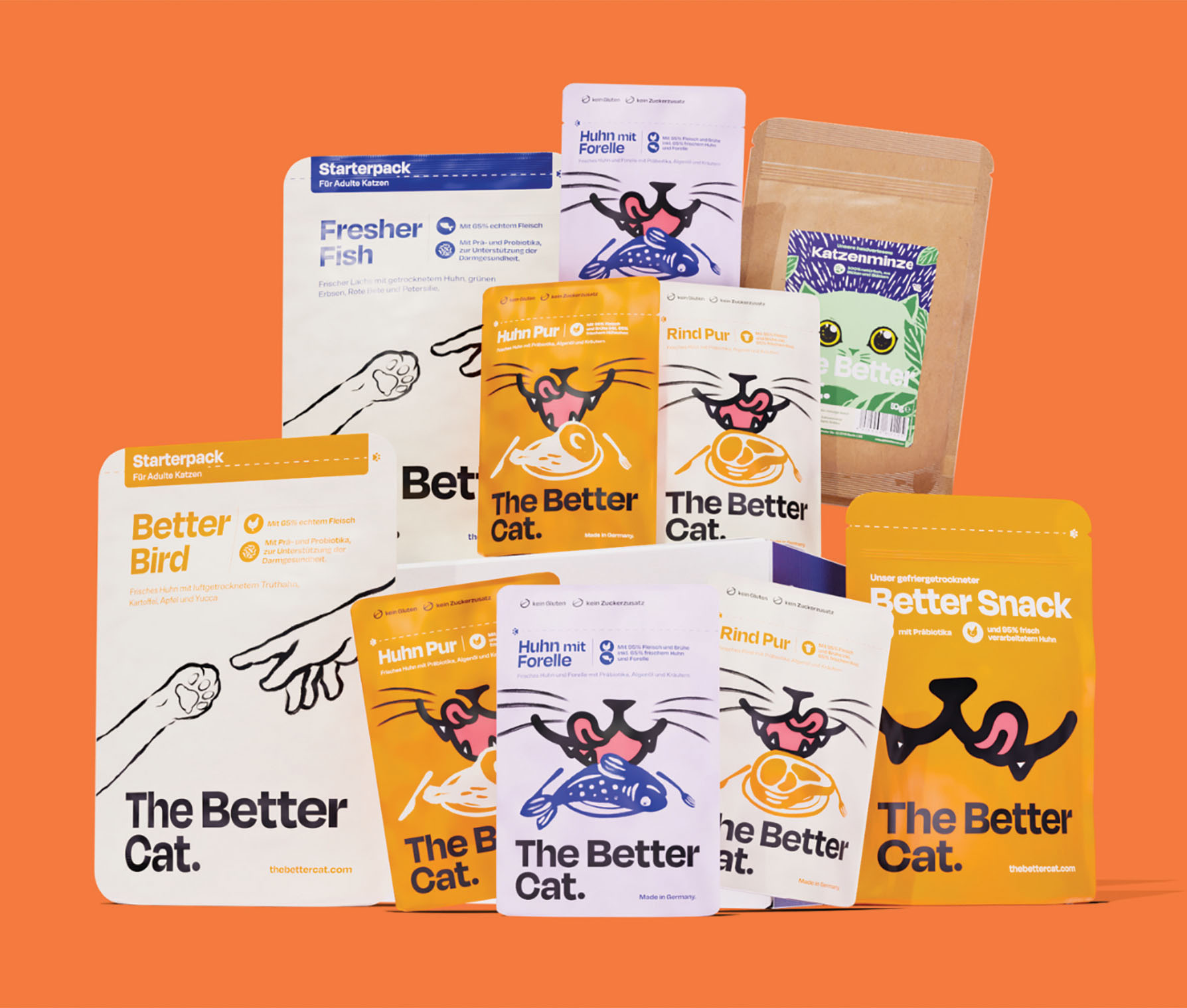
To address increasing consumer demand for sustainability, The Better Cat’s formulas are made with algae oil instead of salmon oil.
| Source: The Healthy Pet Co. GmbHTo lessen its environmental impact and the strain on fisheries, The Better Cat replaced salmon oil in its formulas with algae oil, a more sustainable alternative. According to Shadra, the company was the first in Germany to make the move.
“We believe that the ball has just started rolling on making cat food more sustainable,” Sharda said. “It is a well-documented fact that cats are carnivores, so they need a large amount of good quality meat; however, what is stopping us from innovating on the other animal-sourced ingredients that are used in the manufacturing process today?
“We believe that lab-grown/cultivated meat is also an increasing trend, especially in the United States,” he added.
Research, research, research
With cat ownership set to rise throughout the globe, cat parents will become more determined that their felines be treated less like second-class citizens. This will undoubtedly cause more feline-centric companies to spring into the market offering more functional cat foods and treats, much like those already on the market for dogs.
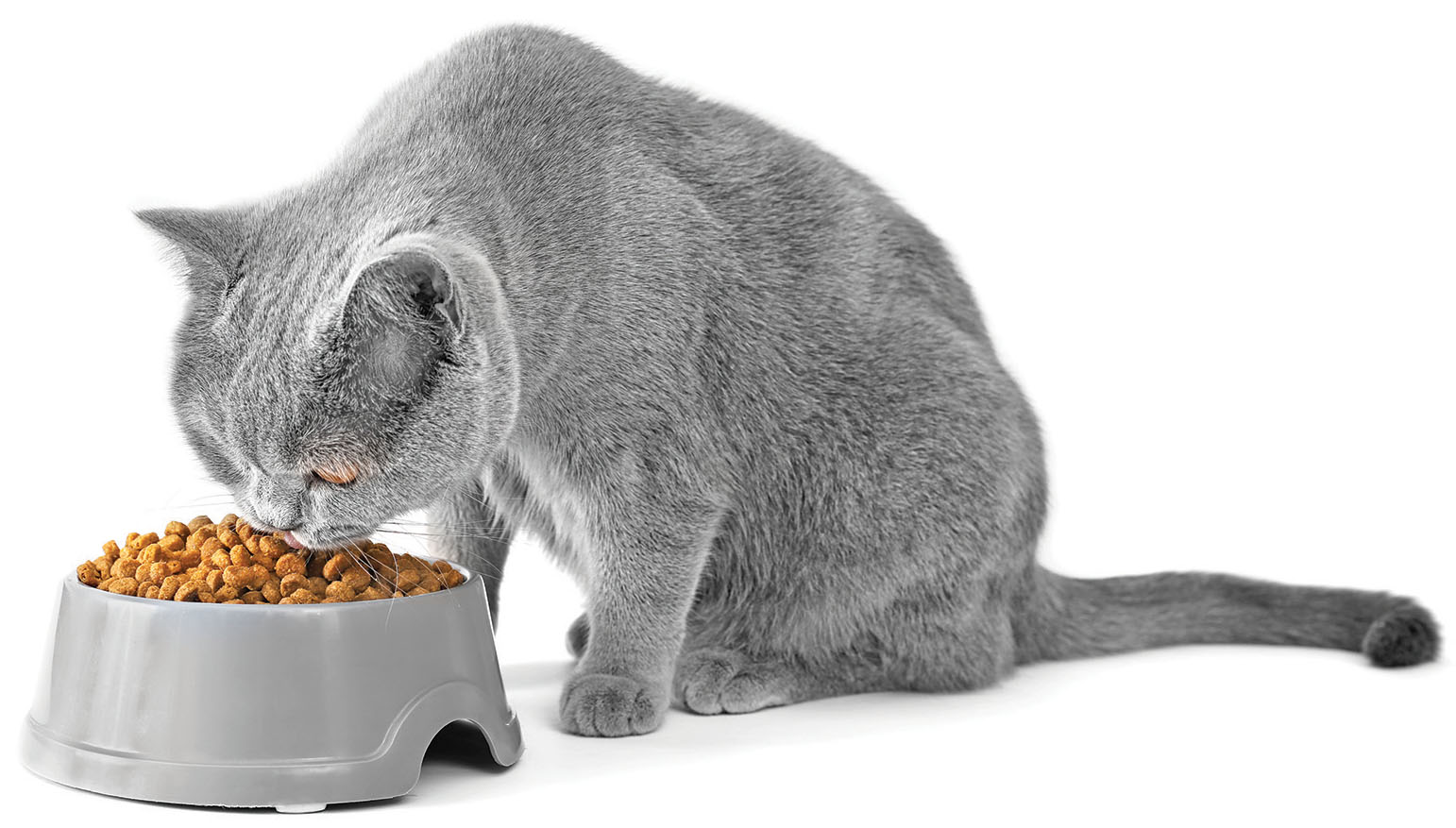 Source: ©DENIS – STOCK.ADOBE.COM
Source: ©DENIS – STOCK.ADOBE.COMBefore this can happen, additional research into cat health and nutrition is needed. According to Su, there is much less research done on felines, especially for functional and novel ingredients, furthering the difficulty in creating innovations for these meowing companions.
“Cats are not small dogs,” he added. “Functional ingredients to include in cat products need to have been evaluated in cats for safety and efficacy. I would encourage companies to perform more cat-centric nutrition research to add to what we know about functional ingredient dosing and safety for our feline friends.”
Keep up with the latest pet food trends on our Trends page.
